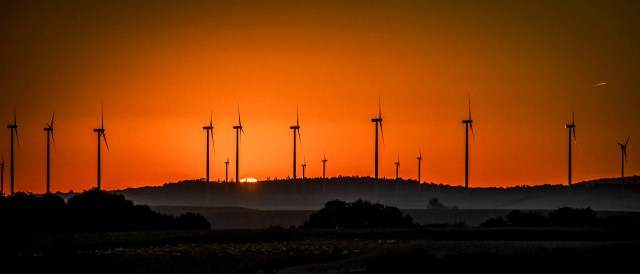Preliminary figures show that 2014 was a record year for wind power in Germany. Craig Morris says the performance will unfortunately be hard to repeat.

2014 was a historic year for wind power in Germany. (Photo by CrashSunRay2013, CC BY-NC 2.0)
German wind power production hit a new record level in 2014, though it only rose slightly – by around one percent to 52.4 TWh (press release in German). The bigger story is the new level of installations. The previous record of 3.2 GW was set way back in 2002, and the market has come in closer to 2.0 GW annually since then. But last year, closer to 3.4 GW was newly built – and repowering might bring the total up to 3.7 GW.
“Repowering” essentially means that new turbines replace old ones, which are dismantled. With roughly 25,000 wind turbines already built, Germany is looking to use the land taken up by old wind farms more efficiently. Wind turbines are designed to last for 20 years (though new ones may be able to run for 30), so the first ones from the early 90s are now coming up for replacement. The average turbine size is now several times larger than those built 20 years ago, so more generation capacity is added even as the total number of turbines is reduced on old wind farms.
 For instance, 400 kilowatts would have been a formidable size for a turbine in 1994, but 2.5 megawatts – more than six times larger – is fairly standard today. So one modern turbines can replace six that are 20 years old. Incidentally, the largest turbine on sale has a 7.5 MW generator, so a single one could replace nearly 20 old ones.
For instance, 400 kilowatts would have been a formidable size for a turbine in 1994, but 2.5 megawatts – more than six times larger – is fairly standard today. So one modern turbines can replace six that are 20 years old. Incidentally, the largest turbine on sale has a 7.5 MW generator, so a single one could replace nearly 20 old ones.
Unfortunately, 2014 may have been a temporary uptick. Germany now has a target corridor of 2.4 – 2.6 GW of new wind power installations. If more is installed in a given year, feed-in tariffs for future systems drop (they remain unaffected for existing projects). Because 2014 was so successful, future payments will now be lower, so the market might slow down. (Note that repowering is not included for that target, so the 3.4 GW of new installations apply, not the 3.7 GW that includes replacements.)
Furthermore, there was a rush in 2014 to complete projects before new policy changes go into effect. For instance, feed-in tariffs are to be done away with for most system sizes, with the entire market to be based on reverse auctions by 2017, which will increase investor uncertainty significantly. In addition, Bavaria adopted draconian distance rules that will practically put an end to new wind farms in the state; new turbines have to be at least two kilometers from the nearest building, up to four times further than in other German states.
Incidentally, wind power production also reached a new peak of around 29.5 GW in December. Still, installed capacity grew by around 10 percent, while actual wind power production only increased by one percent. It all depends on the weather, of course, but we need to increase not only the size of generators, but most of all the size of rotors. Larger blades will allow future turbines to run for more hours per year – another way of getting more energy from fewer units.
Craig Morris (@PPchef) is the lead author of German Energy Transition. He directs Petite Planète and writes every workday for Renewables International.
It seems to be records a go-go in Germany at the moment! A new record of 31.03 GW has already occurred at 3PM on the 9th of the 1st according to the website used to show the 29.5 record on the RI story!
Could you explain the last sentence, please, Craig: “Larger blades will allow future turbines to run for more hours per year”? How does this work? Is it because they’re out of action for servicing less often, or what?
Edmond, the trend onshore is towards increasing swept area, which means the length of blades. The generator size remains the same in the process. The goal is to keep the turbine’s running for more hours per year, which means the turbines have to make do with slower winds. A bigger generator acts as a kind of brake in the process, requiring the rotor to push harder. A bigger rotor means that the same push can come from slower winds.